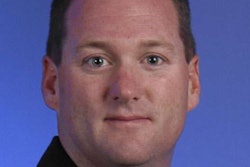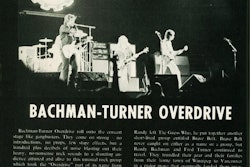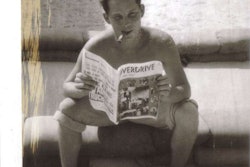Glad Tidings … and Good Luck
As the Indy 500 celebrates its 100th anniversary, recapturing series glory days presents big challenge
OK everybody, take a deep breath. You’re gonna need it to help the Indianapolis 500 blow out the 100 candles on its birthday cake. Yes, the “Greatest Spectacle in Racing” hits the century mark this month, as the very first Indy 500 — known back then as the International 500-Mile Sweepstakes — was held Memorial Day weekend 1911.
Reigning Indianapolis 500 winner and Indy Car Series champion Dario Franchitti.But as it begins its second century, the Indy 500 remains nowhere near the big deal it was in its glory days, when the field was packed with legends like Mario Andretti, A.J. Foyt, Parnelli Jones and the Unsers. It has at least climbed out of the depths to which it had sunk following the disastrous CART-IRL split 15 years ago.
As much as I like the Indy 500, it still feels like a dozen legitimate competitors surrounded by 20 cars that really need to get out of the way. The track is still spectacular, but the ongoing lack of depth in the field remains disappointing.
The Indy 500’s real problem is, of course, that the IndyCar Series — as the IRL has been rebranded — is still struggling to come close to the prominence it once held in the world of motorsports. The open-wheelers had a surprisingly positive 2010 season. Rags-to-riches Will Power drew the early-season headlines with his dominance of the first part of the schedule. Later, the popular Dario Franchitti won his third series crown in a four-year span in the season’s final race — meaning the IndyCar title battle went down to the wire for the fifth time in the last six years.
As fun as all that was, this off-season was disappointing. The new campaign arrived with such popular drivers as Paul Tracy, Tomas Scheckter and 2005 season champion Dan Wheldon without full-time jobs and with 2004 season champ Tony Kanaan landing a ride only at the last minute after being unemployed all winter.
The off-season’s first big headline was largely negative, too. IndyCar officials announced a unique promotion: They would pay $5 million to any driver from another racing series — such as NASCAR or the NHRA — if that driver could win the IndyCar season finale at Las Vegas. The possibility of that happening is as small as the IRL’s TV ratings, but that didn’t stop several IndyCar regulars from blasting the idea from the moment it was announced.
IndyCar officials defended their plan, stressing that it had generated lots of off-season publicity and saying that more than a dozen potential entrants had contacted them even before the year’s first race. But one big complaint is valid, and that is the question of why they spent their winter on a gimmick instead of focusing their energies on helping deserving drivers get rides, beefing up ailing teams or working harder to generate more desperately-needed sponsorships.
This deal just sends the wrong message — that IndyCar thinks it needs outsiders to enhance its credibility. How is it going to look if an outsider — even someone as qualified as Tony Stewart or Juan Pablo Montoya — were to actually win that race?
Elsewhere, the off-season was a mixed bag. The races this year feature side-by-side restarts, which I applaud. But the IndyCar chiefs also wanted to implement NASCAR’s “lucky dog” concept of giving the first driver one lap down a free pass back onto the lead lap during every yellow flag. That proposal provoked an almost unanimous howl of protest from both fans and race teams.
One other important change for this year: The fields are now limited to 26 cars for every race except for the Indy 500 (which, as usual, will cap its field at 33) and the season-ending Las Vegas race, which will be expanded to include the five “outside” drivers.
The fields are now filled by 24 qualifiers and two provisionals, and the provisional rules also generated some chuckles. The first three drivers eligible for a provisional are, in order, the 2010 series champion, the 2009 series champion, then the 2010 Indy 500 winner. What’s so funny? Dario Franchitti just happens to be the 2010 champ, the 2009 champ and the 2010 Indy 500 champ!
After that, there are some other ways for filling the provisional spots, but fastest qualifying speed is the very last one. Is it just me, or shouldn’t that be the first determining factor?
Good, bad or indifferent, though, none of these changes is likely to make even a small dent in the series’ biggest problem — how to make open-wheel racing matter. Sadly, even the 100 candles on the Indy 500’s birthday cake aren’t enough to make the IndyCar Series hot again.
Kay Bell is an Austin, Texas-based writer. When she’s not yelling at her television during NASCAR races, she blogs about taxes and other financial topics at www.dontmesswithtaxes.typepad.com.
LOOSE LUGNUTS
What channel is that again? I plopped down in front of the ol’ TV, ready to soak up several hours of the 12 Hours of Sebring, but the Speed Channel was showing something else. So I checked ESPN. Nope. ESPN2? Nope. ABC? Nope. Versus, MTV, Animal Planet, the Oprah Winfrey Network? Nope, nope, nope and nope.
Exasperated, I flipped on the PC and discovered that the American Le Mans Series has a new broadcast deal in which its races are shown live only on ESPN3.com with highlight shows to air on TV later. I hope the ALMS is getting paid a lot for this arrangement, because it is awful for race fans. Now, I love my computer and all, and I watch TV shows online sometimes. But if the ALMS thinks I’m gonna stare at my little laptop for the entire length of a multi-hour endurance race, they are sadly mistaken. And while the rival Rolex Grand Am Series is growing thanks in part to its consistent TV coverage, the ALMS has, in my view, made a potentially suicidal mistake.
See ya later, carburetor We haven’t had carburetors in our street cars for more than 20 years now, and NASCAR will switch the Sprint Cup cars to a fuel-injection system starting in 2012. The new engine-control units will come from McLaren Electronic Systems, which provides similar components for Formula 1, the IndyCar Series and the American Le Mans cars.
The McLaren units help the racers get better fuel mileage, and give the teams the ability to select from among a range of settings to determine how much fuel is delivered to the engine. That’ll keep the crew chiefs busy.
Green machines Most of the time, I’m happy to make fun of eccentric Formula 1 impresario Bernie Ecclestone, but the white-haired wonder and I agree on one thing: Neither of us wants F1 to adopt smaller and quieter “green-tech” engines as proposed for the 2013 season. Going green is a good deal most of the time, but this idea is just nuts. And the worst part is making the cars quieter. Just as feeling that deep-throated engine growl reverberate through the grandstands is one of my favorite parts of being at a Sprint Cup race, hearing the ear-piercing whine of Formula 1 engines as they hit upward of 19,000 rpm is an integral part of the F1 experience.









